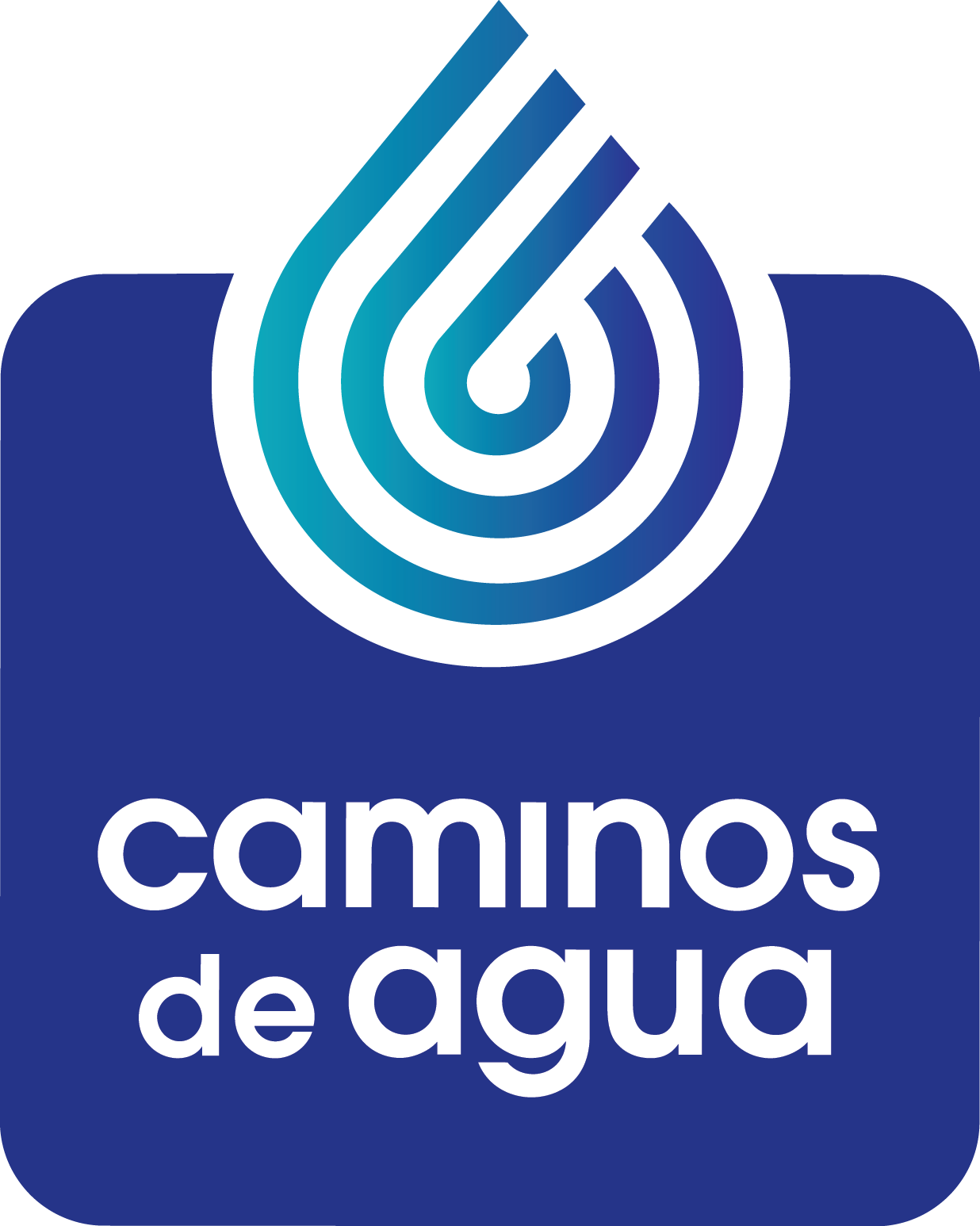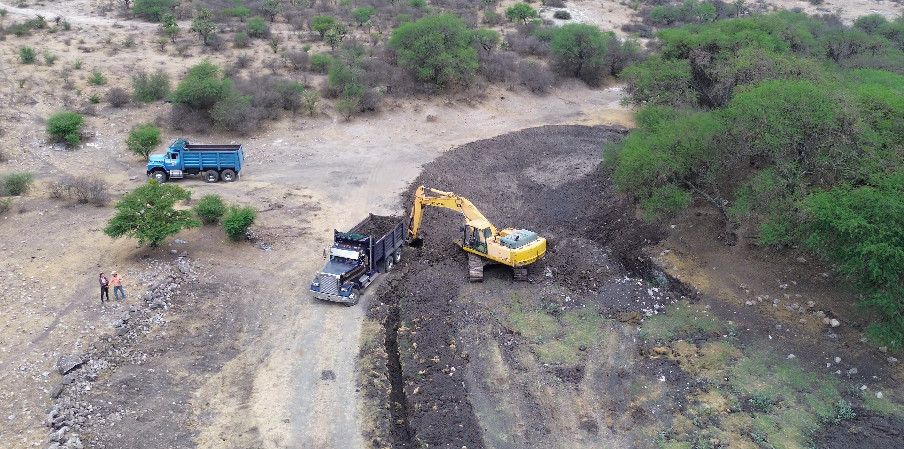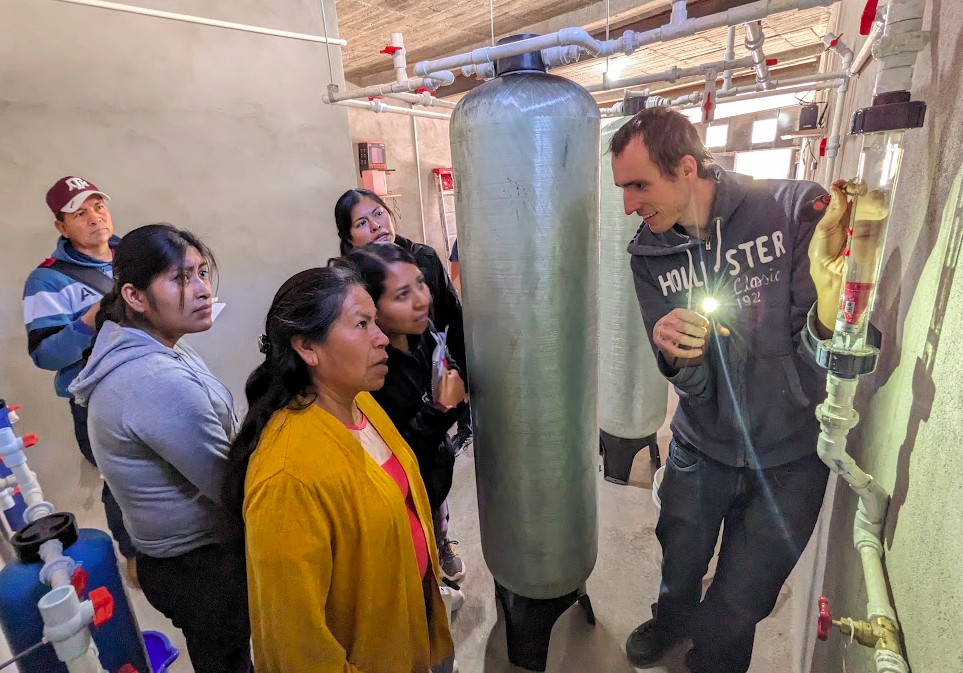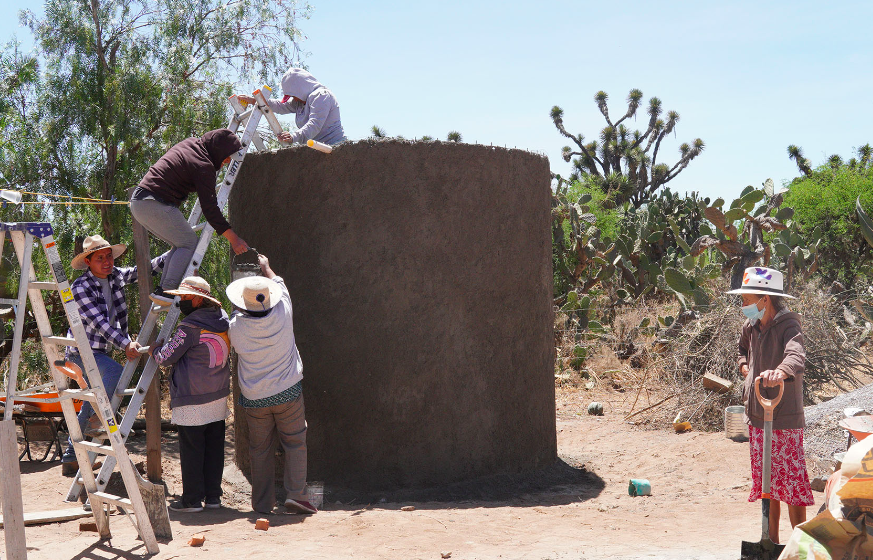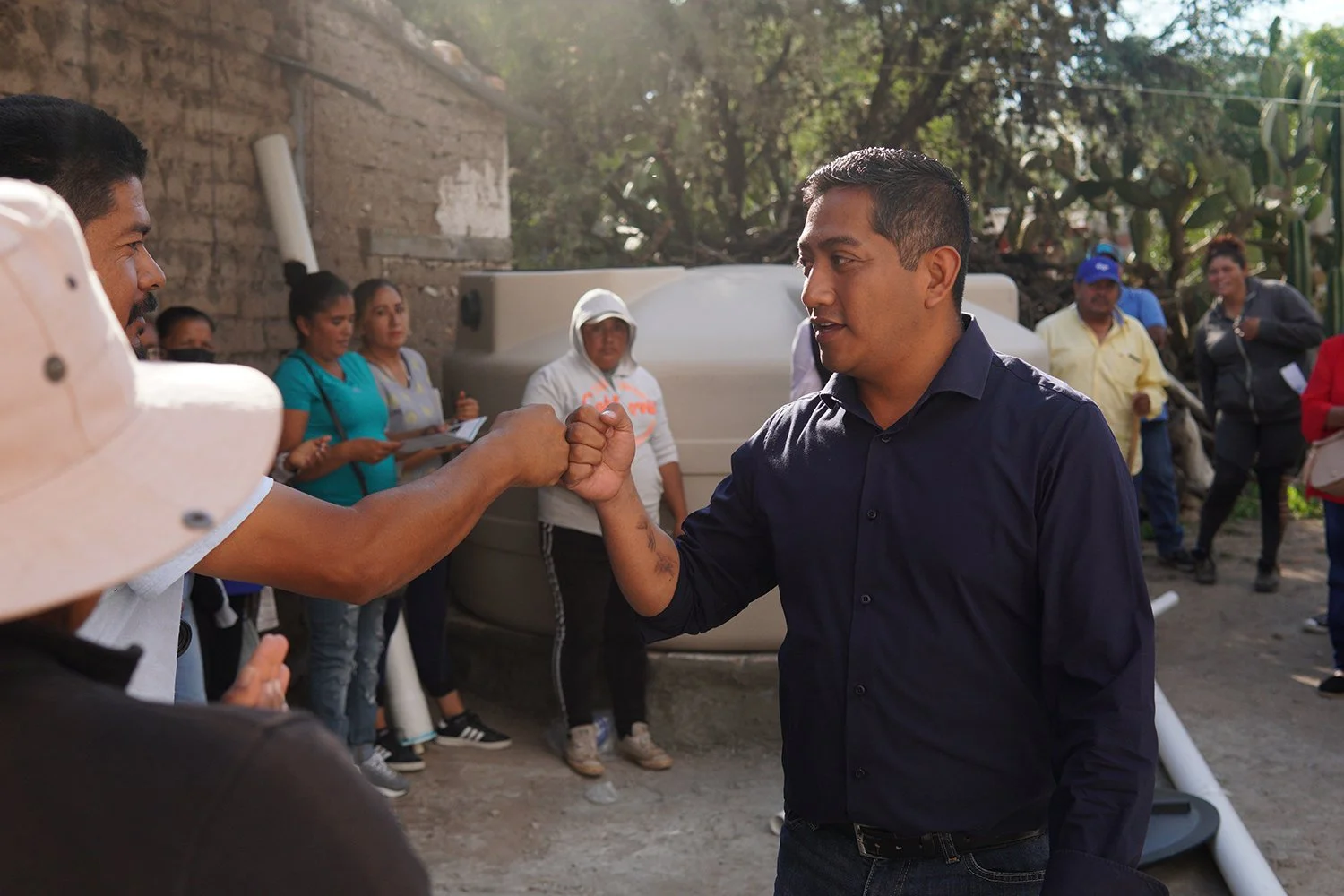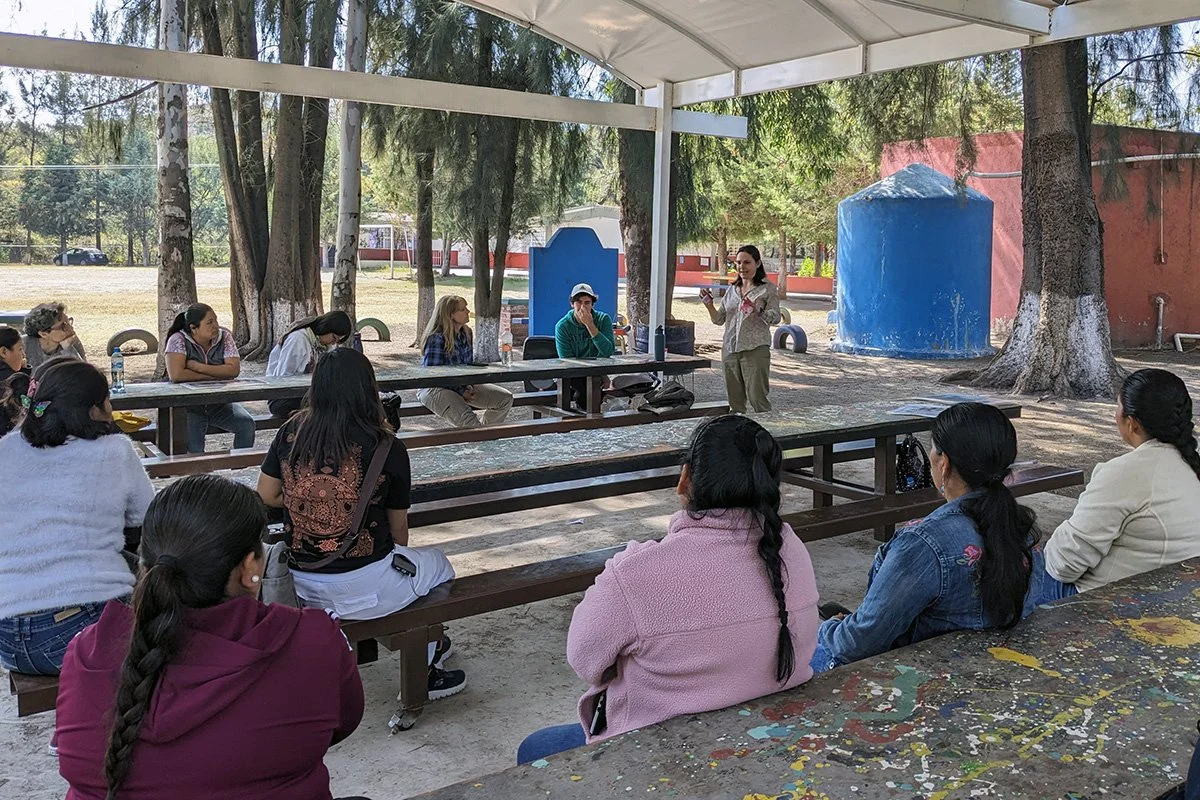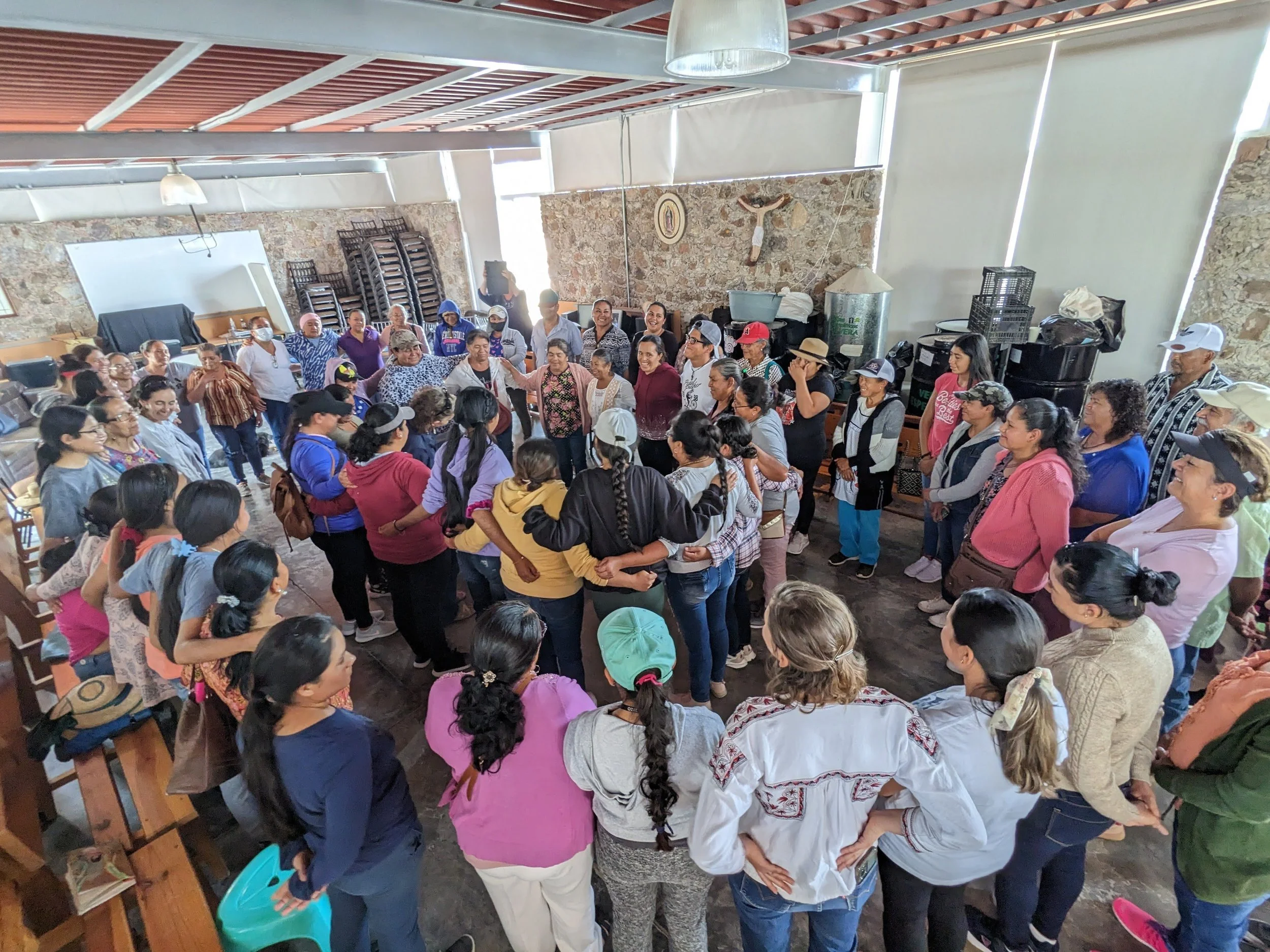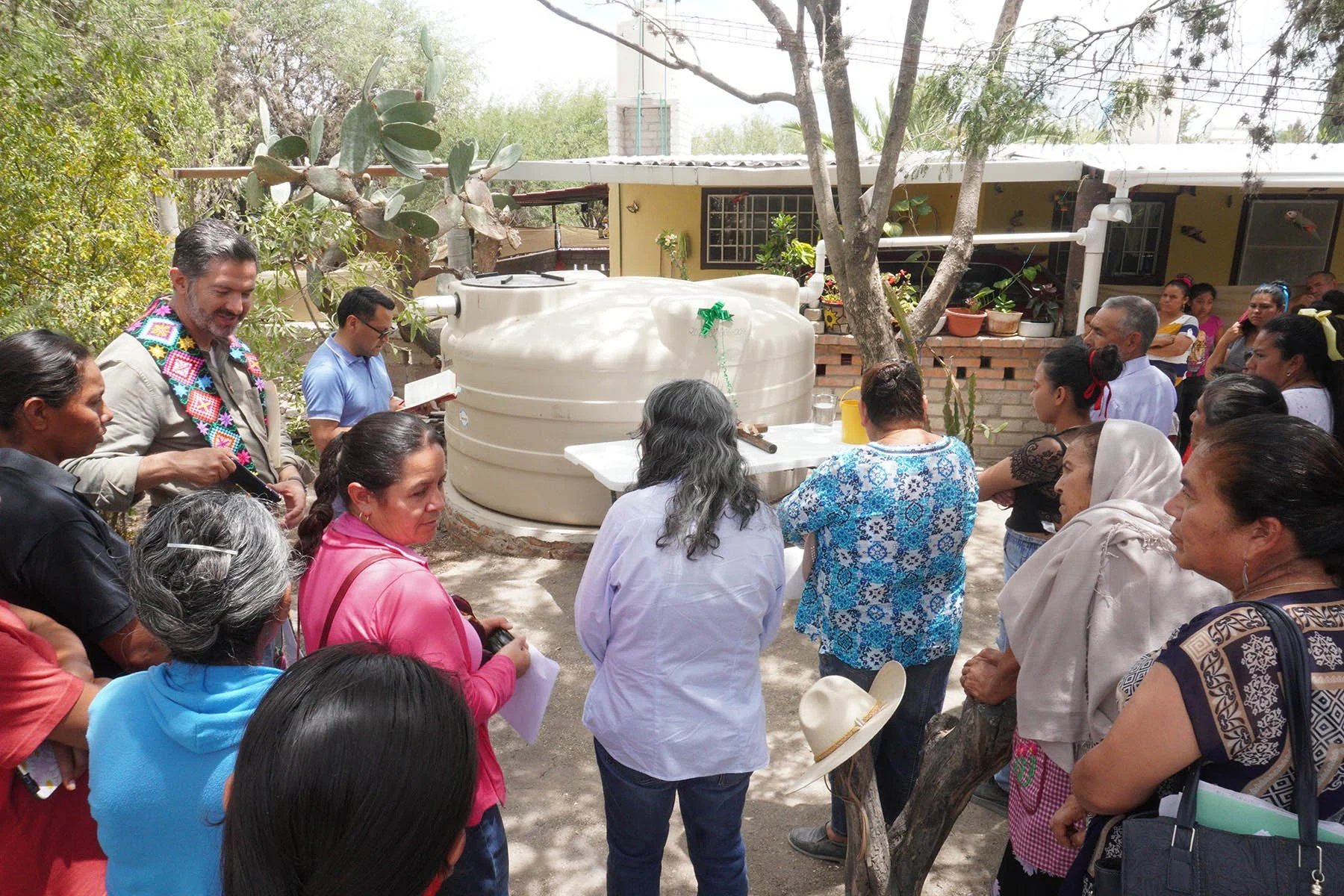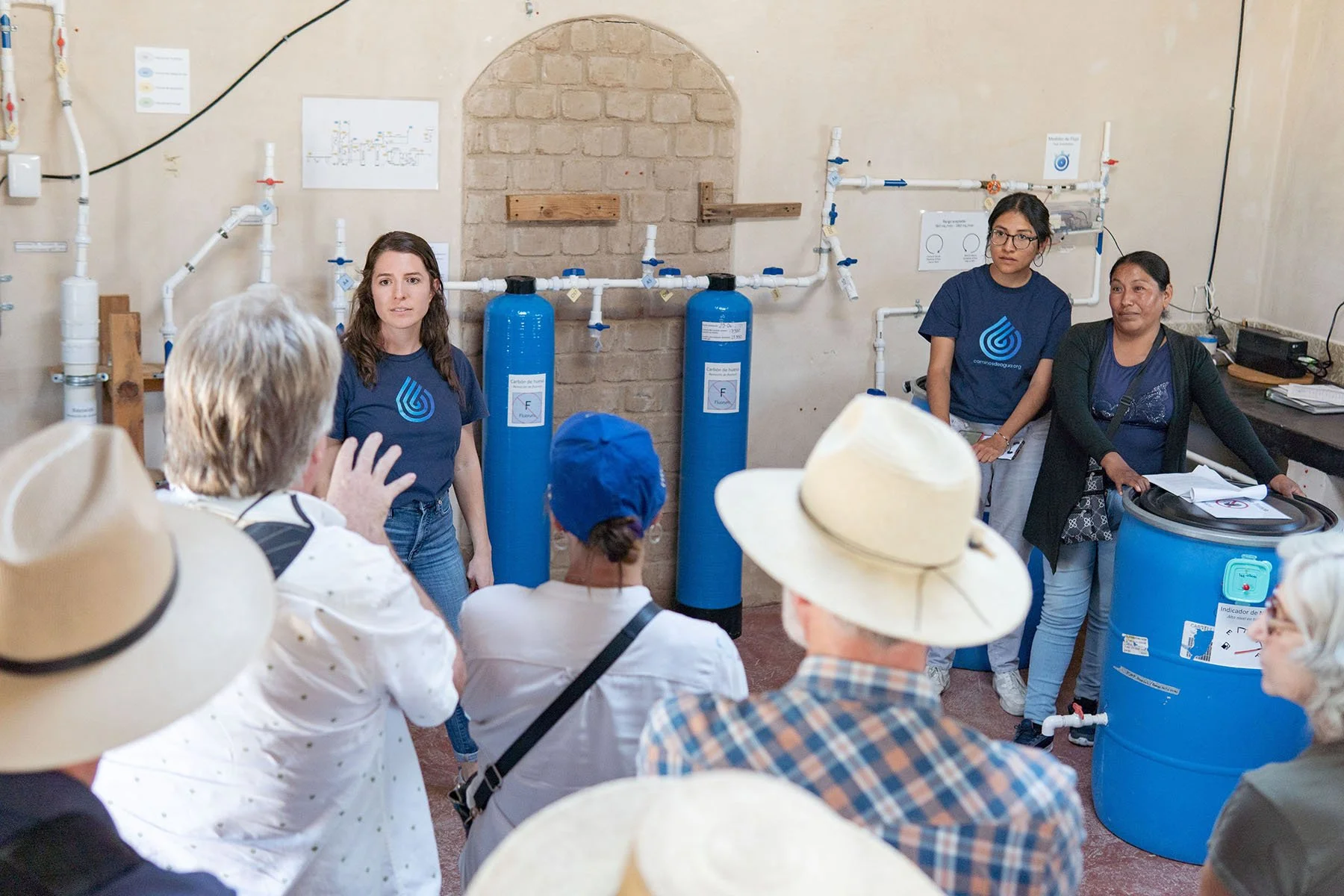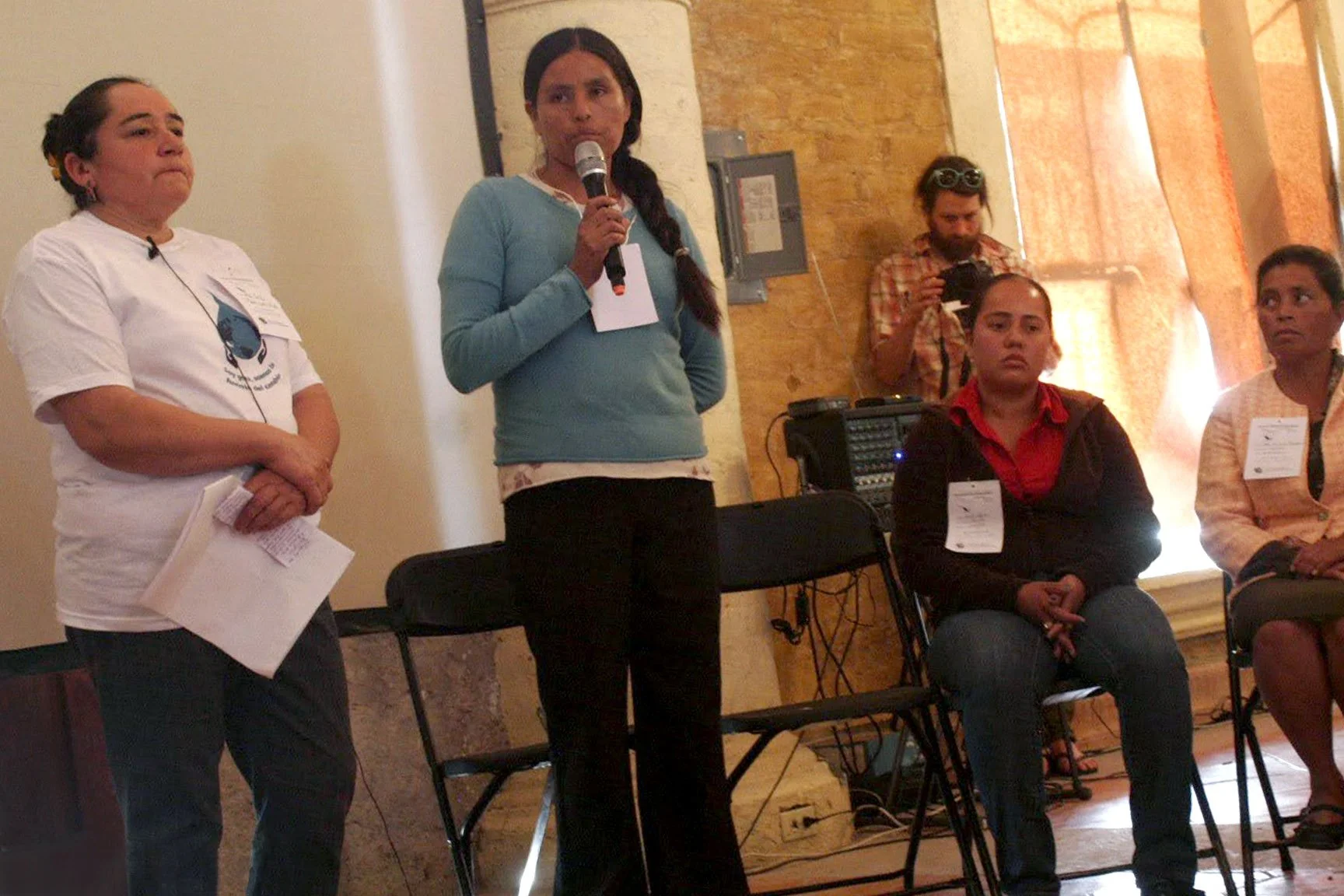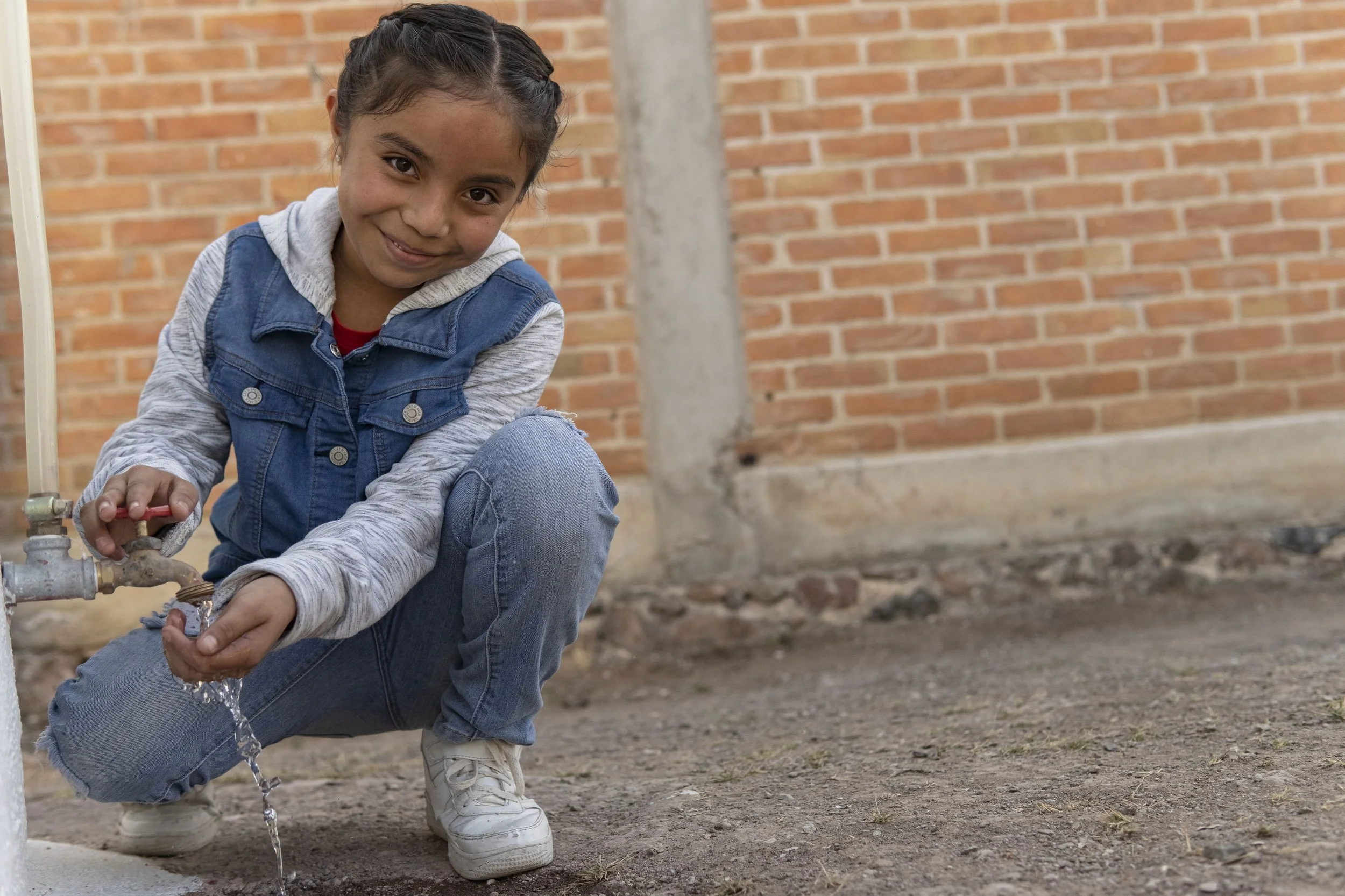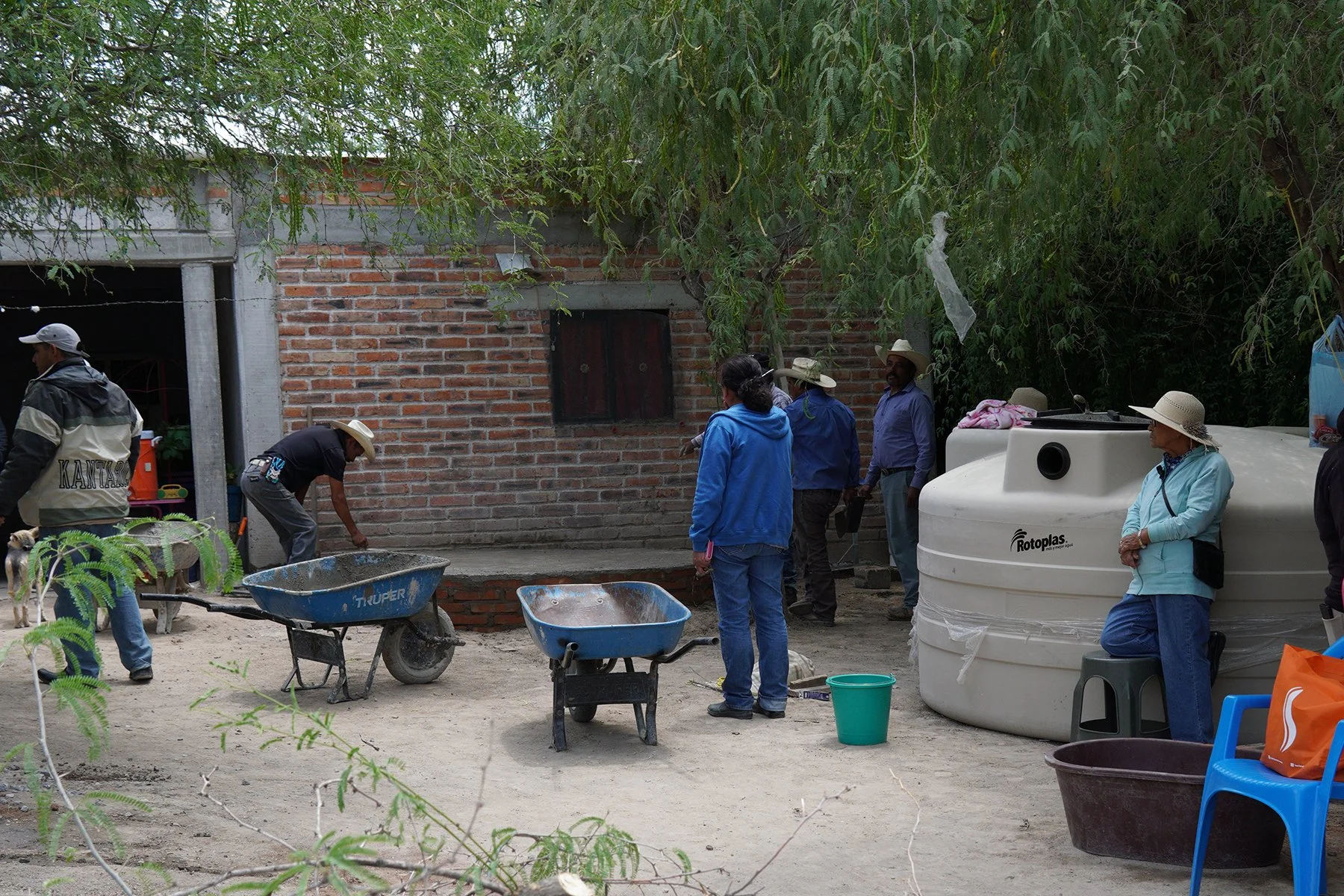During the 20th century, the concept of bordos, or rainwater retention ponds, which long supplied communities in our region with water for millennia, were largely abandoned with the advent of deep-well drilling technology. Back in the 1950s, we started drilling wells and pumping water up from the deep aquifers beneath our feet. Unfortunately, we never stopped, or limited extraction. So, for decades, the water table has been dropping, now up to a dangerous rate of 3 meters a year, and has become contaminated with dangerous levels of arsenic and fluoride.
Read MoreLa Jarrilla is just one of hundreds of rural villages in San Luis de la Paz, a neighboring municipality to San Miguel de Allende. Many of these villages receive water only once or twice a week, and the water they do get is often highly contaminated.
Read MoreIs it safe to shower with arsenic and fluoride in my water? Can I eat vegetables irrigated with high levels of arsenic?
These are questions we receive often at Caminos de Agua. So, before understanding your water quality, it’s important to first understand the risks of arsenic and fluoride in the water. You’ll notice that this entire section is focused on water for drinking and cooking, or what we frequently call water for “human consumption.” Read on to learn more.
Read MoreToday, we’re excited to introduce to you the strategies we’re implementing over the next three years to make a much deeper impact on our water crisis, as well as the community of partnerships we’re building to bring this USD $2.3 million initiative to fruition.
Read MoreA Growing Environmental and Health Crisis, Requiring a Diversified and Scaled Response.
Read MoreLast week, we reviewed with you our accomplishments in 2023 (see our email from last week in case you missed it!). This week we're excited to share our major goals and actions planned for 2024 as we continue on our commitment to mitigate the growing water crisis in our region. Your support has also been crucial, and we're excited to have you by our side as we strive to reach further and make an even greater impact in 2024. Let’s take a look to see where we plan to focus our energy.
Read MoreAt Caminos de Agua we are not able to do any of this work alone. All of these incredible accomplishments are only made possible by a true community of support, with each collaborator playing a critical role.
Read MoreSince late 2020, Caminos de Agua (Caminos) has embarked on what stands as our most ambitious project over our 12 years of existence. Together with our core community and organizational partners – including INANA, A.C., CUVAPAS, SECOPA, and the San Cayetano Community Center – we've persistently expanded access to clean water through rainwater harvesting, sanitation, and water filtration solutions for those most affected by our region's water crisis. Over the course of three years in our collaborative project, "Agua y Salud" (Water & Health), we have collectively worked across a total of 76 communities – constructing an astounding 780 large-scale Rainwater Harvesting Systems, which can produce more than 290 million liters of clean water storage over their lifetime.
Read MoreDespite a growing body of research globally, there has been a scarcity of public health studies on the impacts of these water contaminants in our region. In 2018, Caminos de Agua partnered with the National Institute of Public Health in Mexico (“INSP” for its acronym in Spanish) to look at the impacts of fluoride on our children. Utilizing Caminos de Agua water quality data to identify exposed communities, the researchers found that 82% of children in the study presented with dental fluorosis – the permanent staining, and even deterioration, of children’s teeth.
Read MoreAt the heart of our impact is our educational programming – a robust foundation that goes well beyond workshops and lectures. Our dedicated team of community organizers and educators tirelessly spearheads initiatives that not only seek to impart information on our shared water crisis, as well as technical expertise to build solutions, but also foster a profound sense of community engagement and solidarity. Read more here.
Read MoreThe evolution of our, first anywhere, GTS spans over seven years. This collaborative venture started with Caminos’ technology development team working hand-in-hand with university partners, academics, and other technical experts to first design and prove the technology in laboratory settings. Read more here.
Read MoreHoy, como parte de nuestra campaña de otoño, continuamos destacando a algunas de las muchas personas que hacen posible nuestro trabajo, por lo cual estamos emocionados de compartir una inspiradora historia de transformación: el asombroso viaje de Manuela y Erika, de la comunidad rural de San Cayetano en San Luis de la Paz. Manuela y Erika han pasado de ser beneficiarias de tecnologías de agua a convertirse en apasionadas defensoras y educadoras del agua que trabajan en colaboración con Caminos de Agua, dentro de su comunidad y más allá.
Read MoreThis week, we are excited to introduce you to one of our own, Alexandra "Allie" Alvarez, the Director of Technology at Caminos de Agua for the past 4 years, and share her incredible journey as a young civil engineer making a profound impact on complex water issues in Central Mexico. Allie's story underscores the importance of young professionals becoming engaged in transformative projects, especially as we grapple with pressing issues like the water and climate crises.
Read MoreToday, we are thrilled to introduce you to the inspiring story of Luz Villafuerte, a key collaborator of Caminos de Agua for more than 10 years, and the founder and dedicated leader of CUVAPAS – a grassroots community organization, representing dozens of rural communities, in the heart of the Upper Rio Laja Watershed in Northern Guanajuato, Mexico. Over the years, Luz’s work has helped to organize communities, provide educational programs around health and water, build movements throughout the region, and, in partnership with Caminos de Agua and others, bring life-sustaining water solutions to families most at risk in our watershed.
Read MoreToday, we would like to introduce you to two such remarkable individuals: Chip & Lucy Swab, who have been deeply engaged in social causes in San Miguel de Allende and beyond. Chip & Lucy are among our earliest and most dedicated supporters at Caminos, and their vision and efforts have greatly strengthened our organization.
Read MoreThis talk was originally presented live in San Miguel on November 26th, 2022. After an extensive fact-checking and review process by the TEDx community, we’re excited to be able to bring this talk to you now. So, when you have about 13 minutes to spare, we hope you’ll take a look and reflect.
Read MoreWe at Caminos de Agua are excited to introduce, or re-introduce, you to the importance of our "Drop by Drop" monthly giving program.
Read MoreDevelopment of a low-cost method for Arsenic quantification in water is one of Caminos de Agua's initiatives within the Research and Development program. The goal is to have a method that is affordable and accurate. Technical fellows, academic collaborators, and Caminos de Agua team members have been conducting studies with an electrochemical method for arsenic determination using the Rodeostat, a low-cost open-source potentiostat. IO Rodeo recently wrote a spotlight on Caminos de Agua as we embark on a collaboration to share this method with others. We are looking forward to collaborating alongside the talented IO Rodeo team.
Read MoreEnsuring the safety of rainwater and the success of these kind of programs in our region, has necessitated that we create comprehensive networks of collaboration. It requires the involvement of supporters, like you, water quality experts and technologists, institutional and corporate partners, and most importantly our dedicated community partners and grassroots organizational partners who are deeply invested in understanding and dedicated to resolving our regional water crisis.
Read MoreIn our more than a decade of work in the Upper Rio Laja watershed, we have promoted rainwater harvesting as one of the most effective, and immediately actionable, solutions for those communities facing our severe water crisis. With the rainy season about to begin, we want to emphasize the critical importance of rainwater harvesting as the need to deal with water scarcity and contamination in our watershed becomes more dire.
Read More